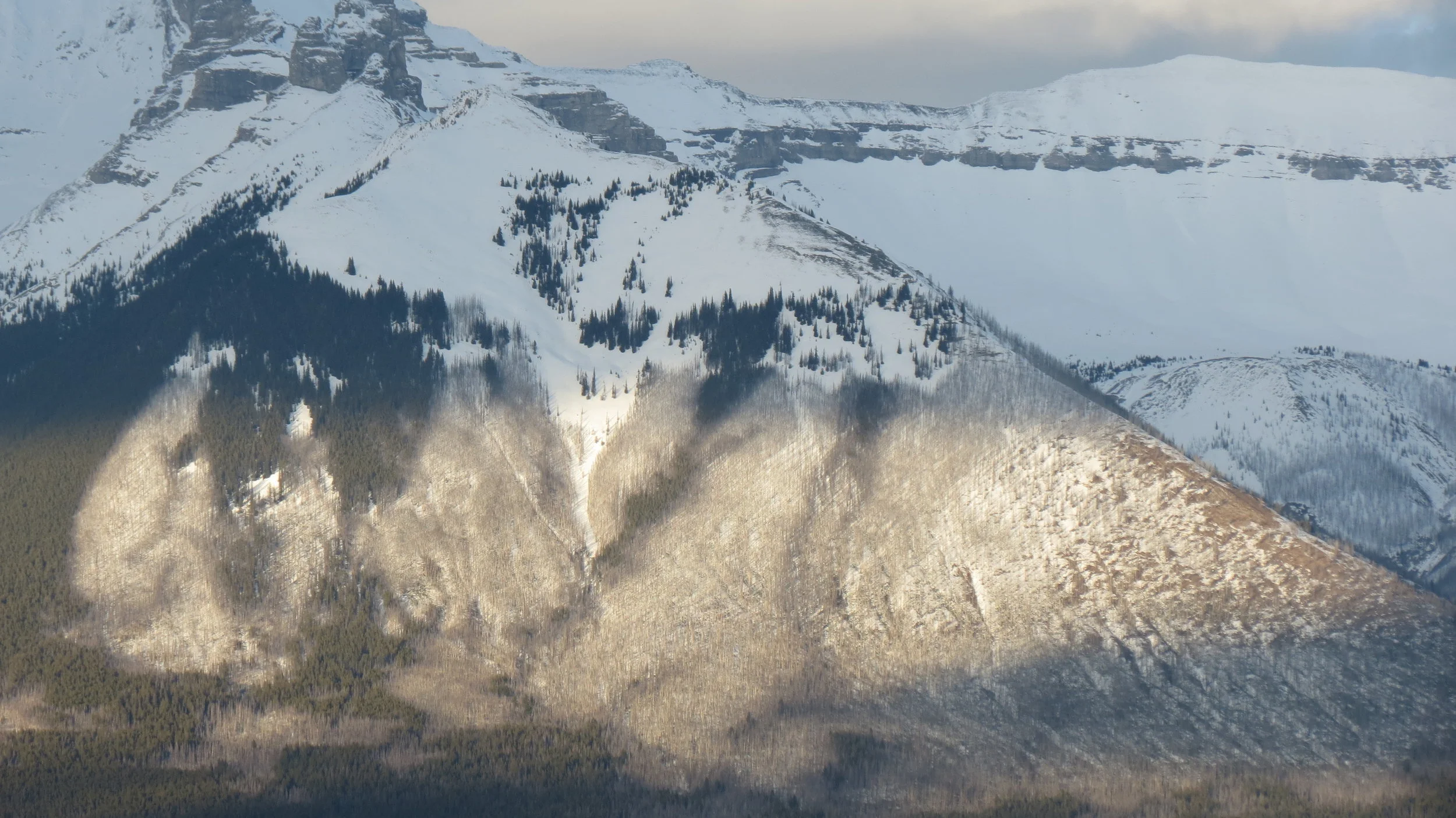Walking on Slow Scree
A multi-channel soundscape performance built from field recordings made in Banff and Yoho National Parks in the Canadian Rockies. It plays with the musicality of natural sounds and the role of the role of the recordist in activating the natural soundspace. Many of the recording locations were extremely quiet, with very little human activity and few birds and animals. In this context the recordist becomes the source of many of the sounds. (S)He is a musician acting on the materials of stone, wood and water. Back in the studio, the compositional process becomes an extension of this performance.
Walking on Slow Scree was originally performed at The Banff Centre, Canada in December 2012 and re-performed at the Symposium on Acoustic Ecology at the University of Kent, UK in November 2013. It is recorded binaurally, listen back on headphones for a sense of the space created by the speaker arrangement.
High Mountain Dialling
An audio installation comprising two short stories from the Candian Rockies curated by Wasted Spaces. A man self-rescues himself from a mountian with a broken leg only to have his father in law take a chainsaw to his scrotum, a juggling trick goes horribly wrong and another young man finds himself covered in bear spray (mace), The work is installed in The Yard, Brooklyn via a vintage telephone.
Produced by Chris Wood and Camara Miller.
Practice Grounds (Banff Park Museum)
This is an audio piece built from recordings of a warm-up exercise for the annual Melissa’s Road Race – a 20-km fun run held in Banff, Alberta every September. This year, 4,500 runners took to the streets of Banff and the race kicked off with a massive group warm-up right outside my bedroom window. I woke to the sound of speakers blasting warm-up instructions to the runners. I made this piece by placing microphones out my window and recording the action.
The context of this recording is important on one level, but ultimately this piece is about repetition and repetition decontextualises. When stripped of its context, repetition can also recontextualise and transform the repeated object and its surroundings into new shapes and expressions of that repetition. Shout in a valley and the echo can tell you the dimensions of the space. Light a match in a dark room and you reveal its shadowy corners.
In physical exercise, a movement repeated and repeated and repeated again manifests a desire to alter the body, making it into a more ideal form. I see repetition in exercise as effort, longing, and rebuilding. This recording layers and processes multiple repetitions, transforming them into new shapes, contexts, and intentions. This transformation is echoed in the voice of the instructor shouting to the runners: “The reason why I do this move is because you look like birds!”
Every sound and instrument in the piece is built from or triggered by audio samples of the routine, offering a radical transformation of the original recording. Voices shift in pitch and speed. The backing track rises, falls and is built into evolving reiterations. The repetition of individual sounds breaks apart linear meanings and creates a new space and interpretation of group exercise. In the visual culture we live in, audio art is often understood as an abstract medium. Sounds occupy any space and the transformative potential of repetition is realized. In “Practice Grounds,” all sounds can become birds.
